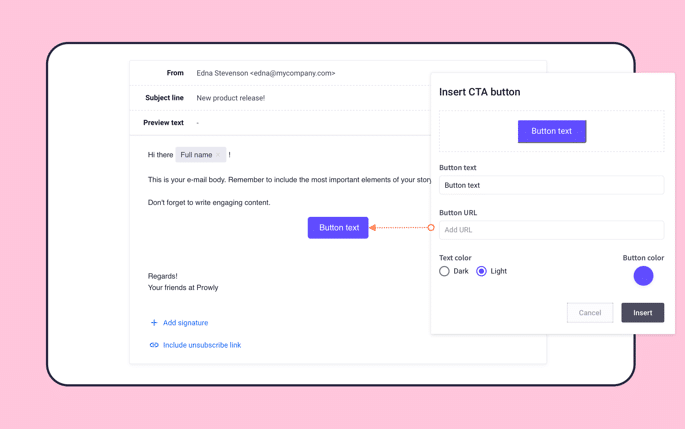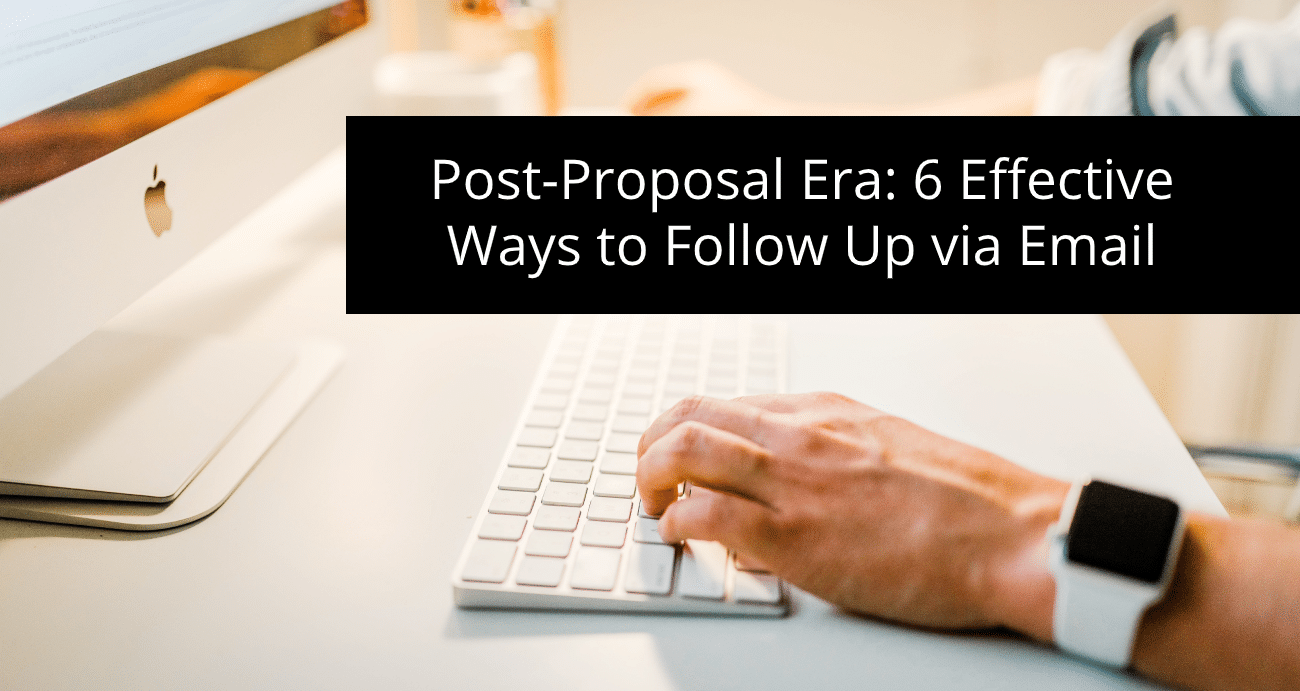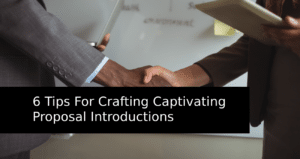After writing and sending business proposals, it can often happen that you do not get an immediate answer.
In order to make a sale, you need to get feedback from the customer, so one must find the right way to get to it.
You will catch yourself sitting and waiting desperately for an e-mail from the client but there are situations when that just doesn’t happen. However, you have to be persistent.
At first, it can be embarrassing because it can seem like you are tugging at a customer’s sleeve but don’t worry, in a world where the most important thing is to make as many sales as possible, having this feeling is common.
Statistics say that 80% of potential customers give a negative answer four times before they eventually give a positive one.
Maybe your client did not have the opportunity to respond immediately, even after 2, 3 sent e-mails. Maybe he was preoccupied.
The point is, it doesn’t matter. What matters is finding a solution.
So, here are 6 effective ways to follow up via e-mail that you can take advantage of in the future.
1. Choose the right time
Many are wondering when is the right time to send a follow-up e-mail. Well, it is important that you do not do this just a few minutes after you submit the proposal, and that you do not wait too long because you have to encourage the client’s action.
It is important to remind your potential clients, and you can do this a day or two after your first contact, which many claims are an average break.
Choose the right frequency when it comes to e-mails sent, and keep a balance based on your clients’ behavior.
For example, if you receive a notification that a client has opened and read your proposal, then it is best to wait no more than a couple of hours to send an e-mail while the client is still somewhat interested. Maybe you just need to explain some segment of the document in more detail.
If it is a joint decision of the whole team, then it is best to wait a few days.
In case you don’t want to waste your time asking yourself if the client opened your proposal, you can use the advantages of Prospero.

It not only notifies you when a client opens your proposal, but it also tracks the number of times your proposal was opened and for how long the client watched it in total.
2. Use appropriate email subject lines
Subject lines are actually very important, and in contrast to what many do, devote to their creation the necessary attention and effort.
The subject line should be an introduction, it should be appropriate, eye-catching, and it has to reflect exactly what is in that email’s content.
The biggest mistake is to use the term ”follow-up” in the subject line itself. It is irrelevant to the purpose of the e-mail and it doesn’t add any value.
Some of the tricks for writing good subject lines are:
-
Get to the point
That means you need to be clear and concise because clients work very hard and don’t have that much time for interpretations. Explain the purpose of the e-mail, and get to the point right away.
-
Create a sense of urgency
You can give your clients a certain deadline. You can use words like ”tomorrow”, add some type of scarcity moment, or similar. Urgency affects quick decision making, so take advantage of that. Of course, it should not seem too intrusive.
-
Stimulate curiosity
Don’t give it all away before the client even manages to read the e-mail itself and actually get familiar with the content. Your subject line should be such as to arouse the need for more information, and that will later affect the increase in sales.
Statistics say that 69% of e-mail recipients consider email spam solely and exclusively based on its subject line, so take this part very seriously.
3. Personalize your follow-up email
Focus exclusively on the client and his needs.
Address him directly, using his name, which is the right way to strengthen your business cooperation.
In addition to enthusiasm, you need to show that special connection between you and the client and create a sense that his needs are your focus.
By personalizing follow-up, you make your e-mail more accessible and direct.
Use sentences like ”You might be interested…” or use your clients’ names and address them directly.
Also, if you have previously exchanged emails with this client or collaborated, continue your conversation where you left off and use already known information.
You can ask your client for suggestions to show that you appreciate his opinion and thus put a spotlight on him, too.
4. Keep your follow-up email brief
Don’t complicate things, because that way, you will create even more work for yourself.
In a few lines, you can explain everything and do it without keeping your client unnecessary and wasting his time.
Explain what your need is to send an email and do it clearly, concisely, and concretely. As Boomerang states, the most adequate length of an e-mail should contain between 75 and 100 words.
Therefore, your e-mail should cover the following essential items:
- Strong subject line
- An objective
- Context
- Purpose
- Personalization
- Added value
We will explain the latter in more detail in the next paragraph.
5. Add value
Added value is extremely important because there are a lot of competitors in the market and if your client doesn’t get what he needs from you, he will find someone who will have something interesting to add to his offer.
Go straight to explaining why your service meets their needs and what makes you stand out.
Briefly mention what their problem points are and what solutions you can offer them.
You can incorporate the following tips:
- List all the benefits they can get, that is, specific solutions.
- Offer some gifts like free reports or videos
- Share some interesting insights relevant to the topic of their project
- Add case studies
All that matters is that clients keep reading your e-mail and take an even greater interest in your offer.
6. Include Call to Action
Be sure to include CTAs in your e-mail so that the client, if he wants, can take action quickly and efficiently.
Make them clear and specific, so that the client knows what to do next.
Among other examples, you can instruct your clients to do the following:
- To reply
- Call you back
- Fill out a certain form
- Review the proposal
Today there is various software that can help you create CTA buttons for your follow-up email and customize them so they suit your needs explicitly.

Source: Prowly
Use your CTAs wisely and don’t forget to include them in your email.
The Bottom Line
If you use email as a means to follow up, make sure you cover all the essentials to make this option effective.
In order to send a quality follow-up e-mail, you need to first send an even better quality business proposal.
One of the tools that can help you with this is Prospero which offers amazing business proposal templates to impress your clients.
Writing follow-up emails can be a challenge because you don’t want to be annoying to your potential clients but at the same time, you feel the need to remind them of yourself.
However, if you already have the option to use them, you should do so.
Be short, clear, and informative, and don’t forget to add value and Call To Action. These are all important items that could determine the success of your business.
So, take advantage of these 6 effective ways to follow up via e-mail and prove to the client that you are absolutely worthy of their attention.




